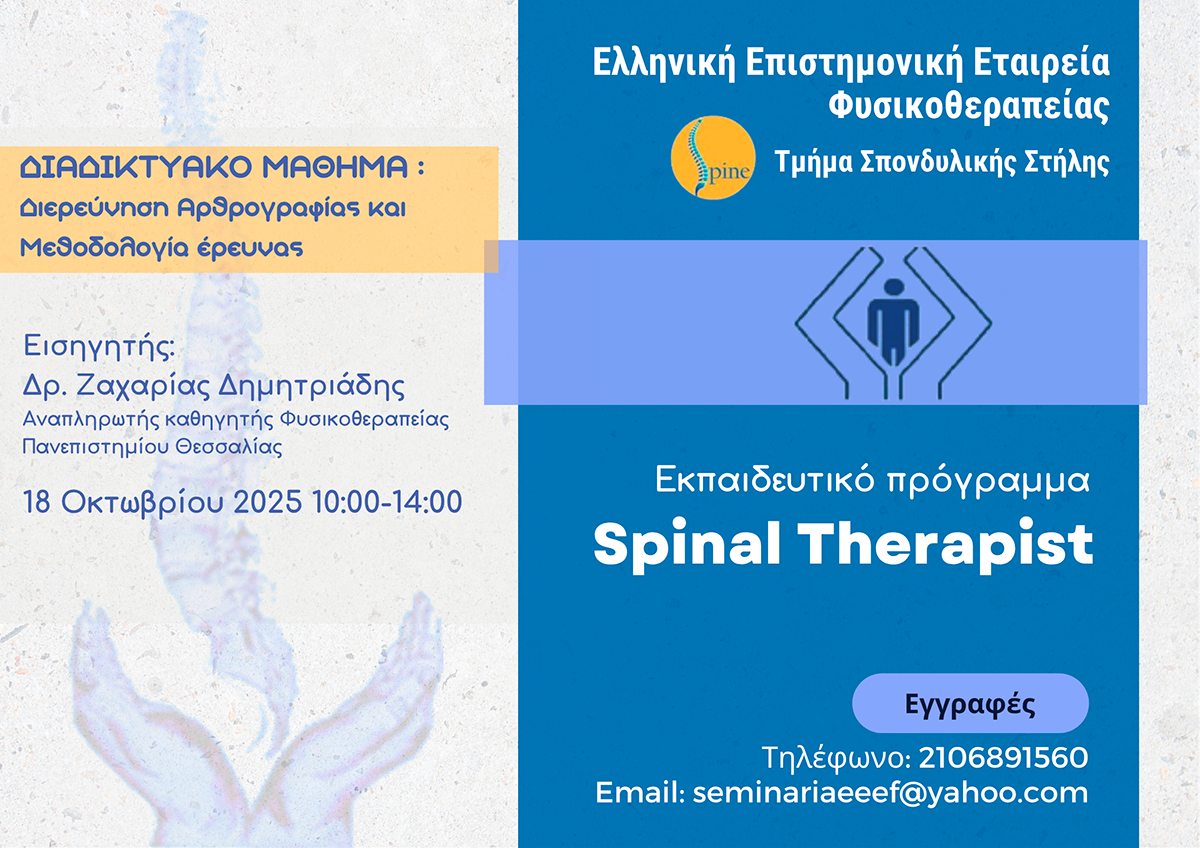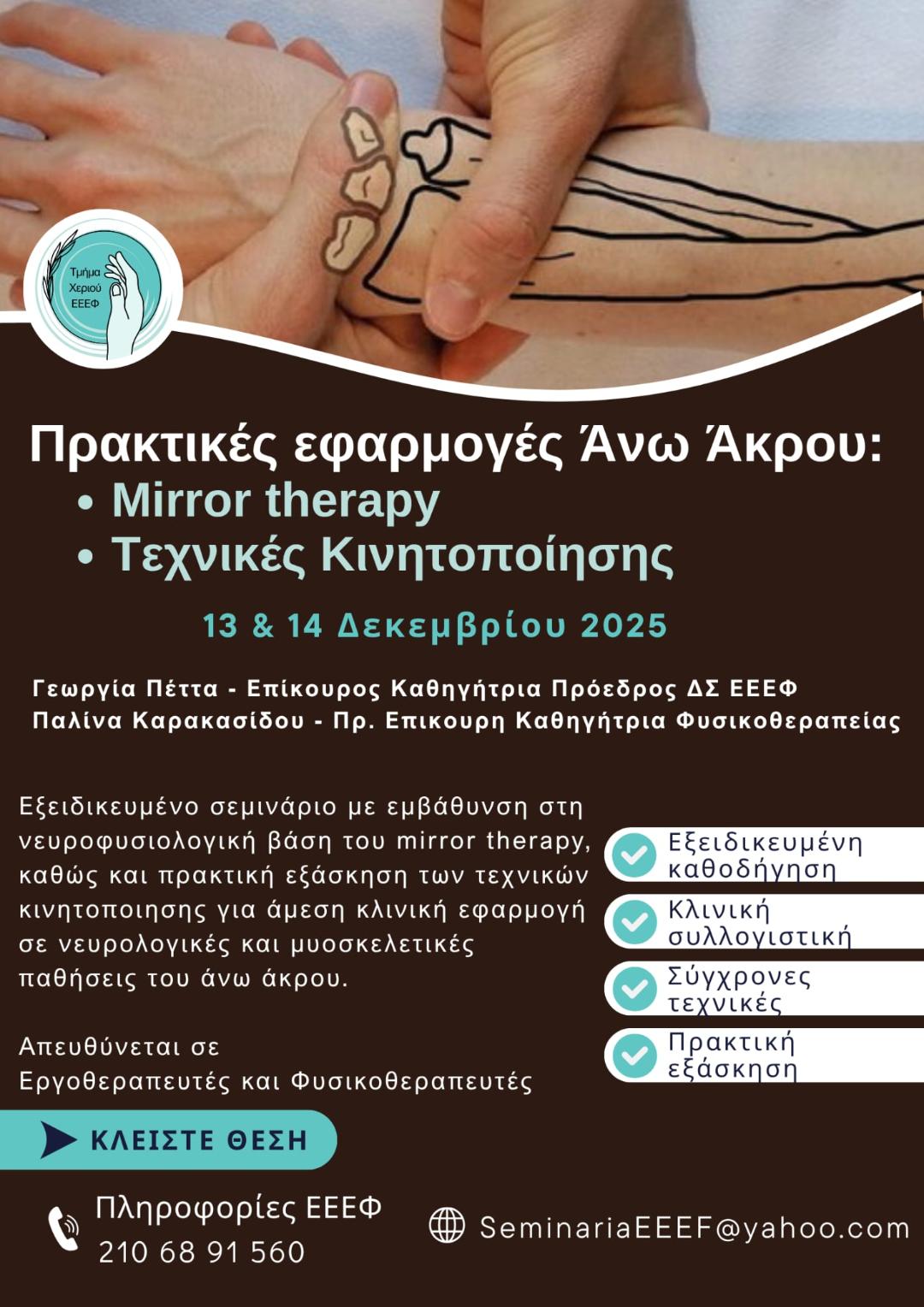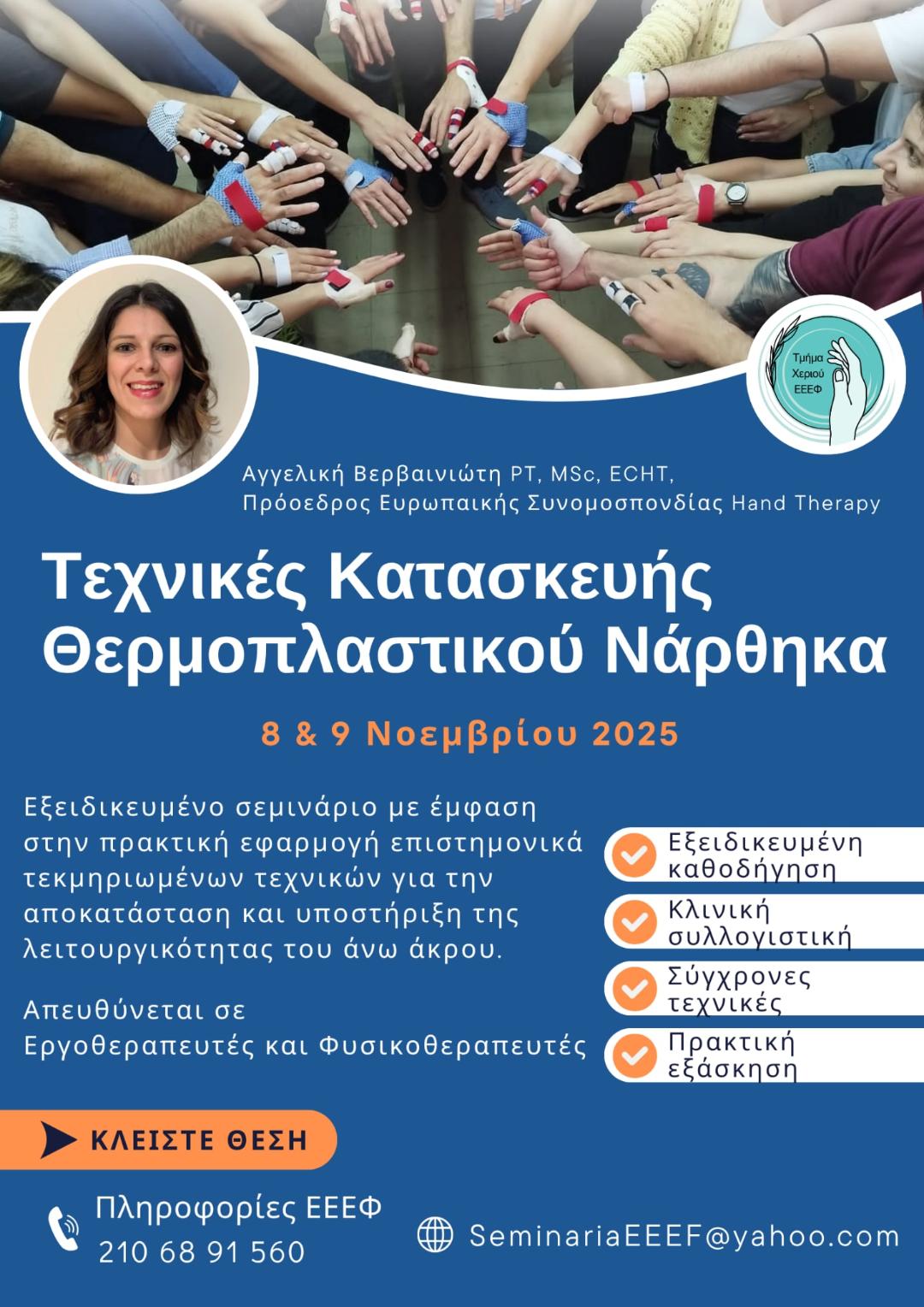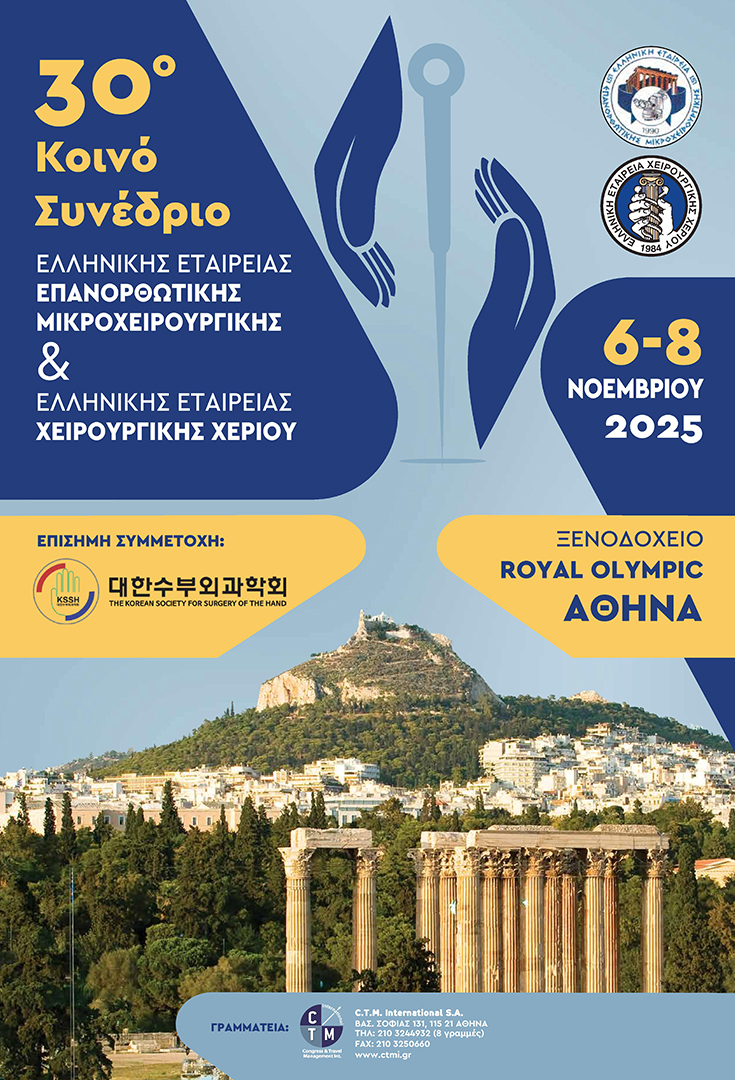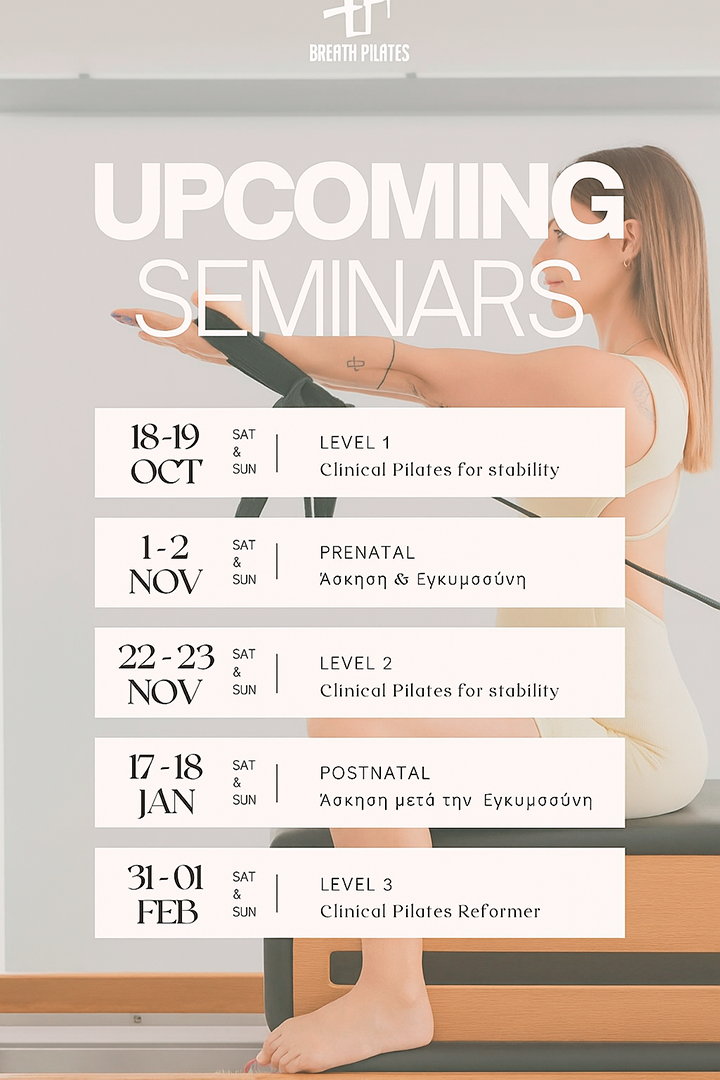ThemFis_Vol 7_Issue 1_Jan_March 2011_1-10
Examination of the Functional Ability in Patients with Neck Pain
Savvas Spanos, Georgia Andreopoulou, Georgios Grimas
ABSTRACT
Pain and functional disability it is considered that affect each other, but the relationship between pain intensity and disability is not clearly definite in bibliography. The purpose of the present study was to investigate the extent in which neck pain affects the functional disability in patients with neck pain syndrome. In this study voluntarily participated 71 subjects (18 men, 53 women). To be someone part of the sample, ought to suffer by diagnosed neck pain in an acute phase with granted the existence of neck pain, as well as to undergo in conservative treatment. Each subject was called to answer a questionnaire for the assessment of disability, the Copenhagen Neck Functional Disability Scale (CNFDS) in Greek version and a Numerical Rating Scale (NRS) for pain assessment.
After the test of the normal distribution of the data and the use of Spearman?s correlation coefficient test, it was established that there is a medium relationship (0,668) between disability and pain scores, which appeared to be statistically significant (p<0,05). Moreover, a further descriptive analysis took place in point of two specific questions of the questionnaire.
The above data indicate that functional ability is affected in patients with neck pain, as well as that CNFDS is a useful questionnaire to assess that, though the topic needs further investigation.
ThemFis_Vol 7_Issue 1_Jan_March 2011_11-20
Physical Activity of Older Adults Aged 65-85 years: Using a Pedometer and the Self-Report Measure PASE
Georgios Tsatsakos, Maria Michalopoulou, Nikolaos Aggeloulis, Vasiliki Zisi
ABSTRACT
The main purpose of this study was to assess physical activity of older adults in Greece and to determine the relationship between physical activity data provided by a self report questionnaire and pedometry. Participants in this study were 100 elderly adults aged 65-85 years. Thirty nine were men (age 71.5 + 6.8 years) and 61 were women (age 70.2 + 6.9 years). Participants completed the Physical Activity Scale for the Elderly (PASE) and wore the pedometer SW200 (Yamax Inc.) for seven consecutive days. According to data analysis, the total number of steps participants performed during one week (26.100 + 11.681), correlated significantly with their PASE score (96 + 41) (r=0.68, p<.01). Men in this study performed 24.809 (+ 10.252) steps and their PASE score was 90.9 (+37.6). Additionally women in this study performed 26.926 + 12.522 steps and their PASE score was 99.3 + 43.2.
In both physical activity assessment women had higher scores but no statistically significant differences were reported. Our results demonstrated that, for both men and women either method can be used to measure the level of physical activity in elderly adults.
ThemFis_Vol 7_Issue 1_Jan_March 2011_21-32
The Impact οf Fear οf Falling, Falls and Gender οn the Quality of Life in Elderly People
Anastasia Zarkou, N. Αggelousis, M. Μichalopoulou, S. Tokmakidis
ABSTRACT
The aim of the present study is to examine the relationship that exists between falls-related history, fear of falling (FOF), and gender and their impact on Quality of Life (QOL) in the elderly. FOF was measured by using the Activities- specific Balance Confidence Scale (ABC) and QOL was measured by using the MOS 36-item Short-form Health Survey (SF-36). Falls were identified by employing a 5-item questionnaire. Fifty one men and 98 women with mean age 77.16} 5.87 qualified for the purposes of the study. 49% of the subjects were identified as fallers. Moreover, 71.8% of the subjects reported that they were very fearful of falling. Differences in changes in SF-36 scores between those with high and low ABC scores were statistically significant for only two out of eight SF-36 subscales (Mental Health and Physical Function), and their total score (F1,141=96.659, F1,141=35,330, F1,141=68.339, p<.001). Significant correlation between falls and SF-36 scores were observed at the Mental Health subscale and the overall score (F1,141=5.160, p=.025 and F1,141=4,209, p=.042). Fear of falling and falls have serious consequences on the Quality of Life in older people. Interventions that successfully reduce fear of falling are likely to prevent future incidents of falls.
ThemFis_Vol 7_Issue 1_Jan_March 2011_33-44
Improvement of Hamstring Flexibility Using Different Stretching Methods. Pilot Study-Critical Literature Review
Maria Vasdeki
ABSTRACT
Lower limp muscles frequently suffer from strains, hamstring strains being the most common. Stretching is used to prevent them, by increasing hamstring elasticity. Many different stretching methods have been proposed for this particular muscle group, each one using different parameters. Such methods are active static stretch, passive static stretch, PNF, stretching through hamstring eccentric contraction and dynamic stretching. The position in which the stretch is done, the time for which it is applied, and the number of the stretching repetitions affect the increase in hamstring flexibility. This is a pilot study, which includes a critical review of scientific articles that are investigating stretching as an intervention to increase hamstring flexibility. The aim of this study is to propose the most effective stretching method that improves hamstring flexibility. The electronic databases that were used were Pubmed, Science direct, PEDro and Cochrane. The articles were evaluated using Consort checklist, as well as PEDro and Jadad scales. Most of the studies presented with methodological weaknesses and low scores on PEDro and Jadad scales. Consequently, their quality was poor, limiting the generalisability of their results. However, the main conclusions were that hamstring static stretching appears to be more or equally effective in comparison to other stretching techniques. Regarding the parameters of static stretching, elasticity changes can occur by stretching five times per week, doing one to three repetitions of 30 second hold.

